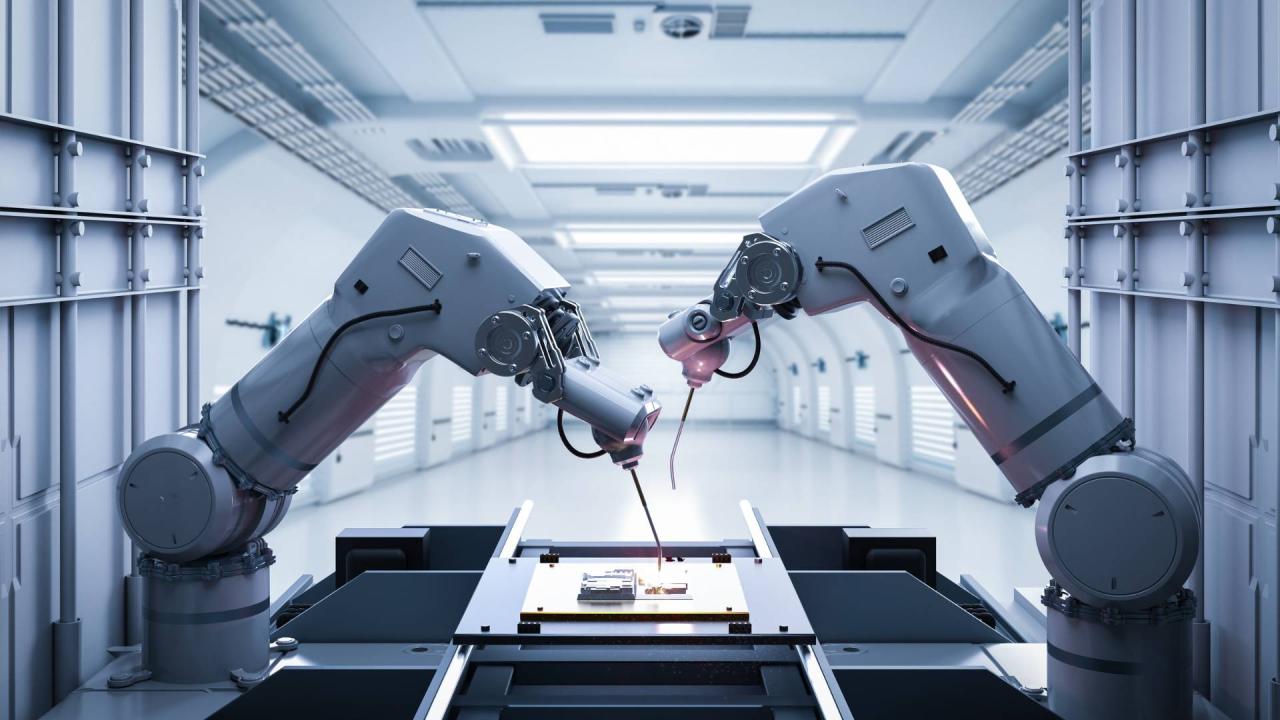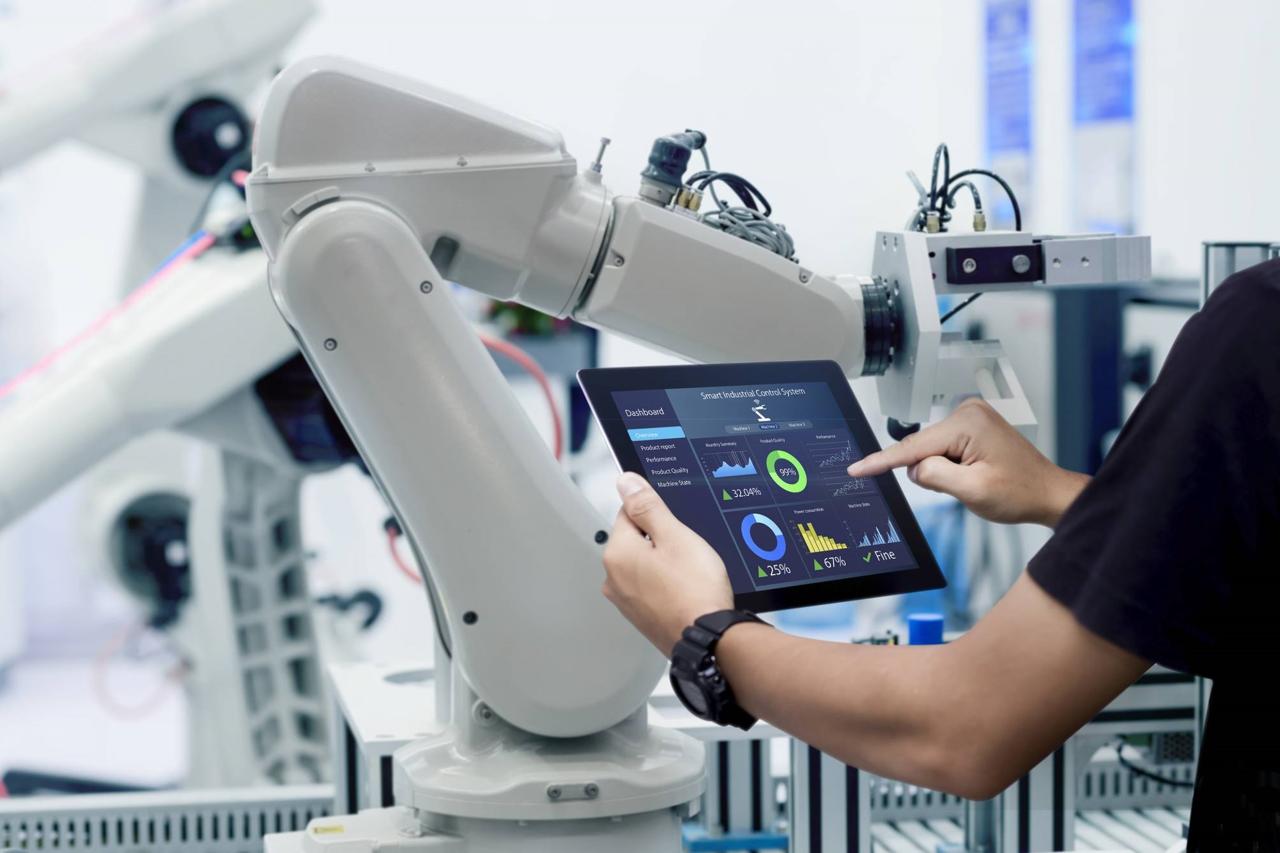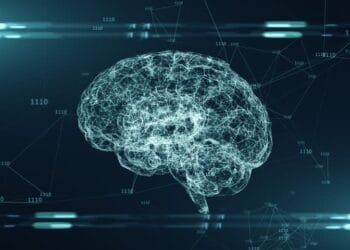In today’s fast-paced global economy, the drive for efficiency is relentless. Businesses, both large and small, are constantly seeking ways to optimize operations, reduce costs, and accelerate productivity. At the forefront of this pursuit lies automation, a transformative force that is fundamentally reshaping industries worldwide. From repetitive administrative tasks to complex manufacturing processes, automation empowers organizations to achieve unprecedented levels of precision, speed, and output, freeing human capital for more strategic and creative endeavors. This comprehensive article delves into the profound impact of automation, exploring its core principles, the diverse technologies that enable its widespread adoption, its revolutionary applications across various sectors, and the critical challenges and opportunities that accompany this technological revolution.
What is Automation?

At its essence, automation refers to the use of technology to perform tasks or processes with minimal human intervention. It involves designing and implementing systems that can execute predefined functions, make decisions, and complete workflows automatically, thereby reducing manual labor, human error, and operational costs. It’s about empowering machines and software to handle the heavy lifting, allowing human employees to focus on higher-value activities that require creativity, critical thinking, and empathy.
The concept of automation isn’t new; it has evolved significantly since the early days of industrial machinery. Today’s automation, however, is far more sophisticated, driven by advancements in Artificial Intelligence (AI), Machine Learning (ML), robotics, and data analytics. This allows for automation of not just physical tasks, but increasingly, complex cognitive processes.
Key characteristics that define modern automation include:
- Repetitive Task Handling: Ideal for tasks that are standardized, predictable, and occur frequently.
- Speed and Accuracy: Automated systems can perform tasks much faster and with greater precision than humans, minimizing errors.
- Scalability: Automation allows businesses to scale operations up or down quickly without proportional increases in human resources.
- Cost Reduction: By reducing labor costs, errors, and wasted resources, automation directly contributes to financial savings.
- 24/7 Operation: Automated systems can work continuously without fatigue, breaks, or sleep, ensuring uninterrupted productivity.
- Data Generation: Automated processes often generate valuable data that can be analyzed for further optimization and insights.
A. The Spectrum of Automation Technologies
Modern automation is powered by a diverse array of technologies, each suited for different types of tasks and industries.
- Robotic Process Automation (RPA): This technology uses software robots (bots) to mimic human interactions with digital systems. RPA bots can:
- Open applications and log in.
- Copy and paste data.
- Extract information from documents.
- Fill out forms.
- Perform calculations.
- Automate repetitive, rule-based office tasks, such as data entry, invoice processing, or customer service inquiries, integrating seamlessly with existing IT infrastructure without requiring complex API development.
- Artificial Intelligence (AI) and Machine Learning (ML): These advanced technologies enable automation to move beyond rigid rules, allowing systems to “learn” from data, adapt to new situations, and make intelligent decisions.
- Cognitive Automation: Combining RPA with AI/ML to handle unstructured data, understand natural language, and perform more complex, judgment-based tasks, such as processing customer emails or analyzing sentiment.
- Predictive Analytics: AI-driven automation can forecast trends, identify potential issues (e.g., equipment failure, customer churn), and automate proactive responses.
- Computer Vision: AI enables machines to “see” and interpret visual information, crucial for quality control in manufacturing, autonomous vehicles, and security surveillance.
- Industrial Robotics: Physical robots designed to perform tasks in industrial settings.
- Collaborative Robots (Cobots): Designed to work safely alongside humans, performing tasks that are repetitive or ergonomically challenging, enhancing rather than replacing human labor.
- Assembly Line Robots: Used for high-precision, high-volume manufacturing tasks like welding, painting, and assembly.
- Automated Guided Vehicles (AGVs) / Autonomous Mobile Robots (AMRs): Used in logistics and warehousing to transport goods autonomously, optimizing material flow.
- Business Process Automation (BPA): A broader strategy that automates end-to-end business processes, often involving multiple systems and departments. BPA typically uses workflow automation software to orchestrate complex sequences of tasks. Examples include automating employee onboarding, expense report processing, or loan application approvals.
- Intelligent Automation (IA): An umbrella term combining RPA, AI, and other emerging technologies like Natural Language Processing (NLP) and Computer Vision to automate and optimize more complex, cognitive processes. IA aims to mimic human decision-making and learning.
- Low-Code/No-Code Platforms: These platforms enable users with minimal programming knowledge to build and deploy automated applications and workflows using visual interfaces and pre-built components, democratizing automation.
Automation’s Transformative Impact Across Industries
The widespread adoption of automation is fundamentally reshaping operations, driving efficiencies, and creating new competitive advantages across a diverse array of sectors.
A. Manufacturing
The manufacturing industry has been an early and significant adopter of automation, driving unprecedented levels of productivity and quality.
- Automated Assembly Lines: Robots perform repetitive tasks like welding, painting, and component assembly with extreme precision and speed, drastically increasing production output and consistency.
- Quality Control: Automated vision systems, powered by AI, inspect products for defects faster and more accurately than human eyes, ensuring consistent product quality and reducing waste.
- Predictive Maintenance: Sensors on machinery collect real-time performance data. AI analyzes this data to predict equipment failures before they occur, enabling proactive maintenance, minimizing costly downtime, and extending asset lifespan.
- Supply Chain Optimization: Automated systems manage inventory, track goods, and optimize logistics within factories and warehouses, streamlining material flow and reducing operational costs.
- Enhanced Worker Safety: Robots handle dangerous or ergonomically challenging tasks (e.g., heavy lifting, working in hazardous environments), reducing workplace injuries and improving safety for human workers.
B. Finance
The financial sector leverages automation to enhance accuracy, strengthen security, and improve customer experience, particularly in high-volume, rule-based operations.
- Fraud Detection: Automated systems with AI capabilities analyze vast amounts of transactional data in real-time to identify suspicious patterns indicative of fraud, enabling rapid detection and prevention.
- Loan and Credit Processing: RPA and AI automate the collection and verification of applicant data, credit scoring, and even initial loan approvals, significantly speeding up processing times and reducing manual errors.
- Customer Onboarding: Automating the identity verification (KYC), document processing, and account setup steps for new customers reduces friction, speeds up the onboarding process, and improves compliance.
- Regulatory Compliance: Automation helps financial institutions monitor transactions, generate compliance reports, and adhere to complex regulatory requirements with greater accuracy and efficiency.
- Algorithmic Trading: Automated systems execute trades at high speeds based on predefined rules and market data, optimizing investment strategies and capitalizing on market fluctuations.
- Customer Service Chatbots: AI-powered chatbots handle routine customer inquiries, provide account information, and resolve common issues 24/7, freeing up human agents for more complex interactions.
C. Healthcare
Automation is transforming healthcare by streamlining administrative tasks, assisting in diagnostics, and improving the patient journey.
- Automated Scheduling and Administration: RPA automates patient appointment scheduling, billing, insurance claims processing, and electronic health record (EHR) updates, reducing administrative burden and improving efficiency.
- Robotic Surgery: Precision robots assist surgeons in performing complex procedures with greater accuracy, minimizing invasiveness and improving patient recovery times.
- Automated Lab Analysis: Robots and automated systems handle sample preparation, analysis, and data interpretation in laboratories, accelerating diagnostic processes and reducing human error.
- Drug Dispensing and Inventory Management: Automated pharmacy systems dispense medications accurately, track inventory levels, and manage supply chains, enhancing patient safety and reducing waste.
- Telemedicine and Remote Monitoring: While not strictly automation, the data collection from remote patient monitoring devices often triggers automated alerts or actions based on predefined health parameters.
D. Retail and E-commerce
Automation is key to delivering personalized experiences, optimizing logistics, and managing vast inventories in the fast-paced retail sector.
- Warehouse Automation: Robots and automated conveyor systems manage inventory storage, retrieval, and order fulfillment in warehouses, dramatically increasing efficiency and speed of delivery.
- Inventory Management: Automated systems track stock levels, forecast demand, and trigger reorders, minimizing stockouts and overstocking, leading to significant cost savings.
- Personalized Recommendations: AI-powered recommendation engines automatically analyze customer Browse and purchase history to suggest relevant products, driving sales and enhancing the shopping experience.
- Customer Service Automation: Chatbots handle routine customer inquiries (e.g., order status, FAQs), allowing human agents to focus on complex issues.
- Dynamic Pricing: Automated systems adjust product prices in real-time based on demand, competitor pricing, inventory levels, and other market conditions to maximize revenue.
- Automated Checkout: Self-checkout kiosks and emerging frictionless retail stores (like Amazon Go) automate the payment process, improving customer convenience and reducing labor costs.
E. Customer Service
Automation is transforming customer service from a cost center to a driver of customer satisfaction and loyalty.
- Intelligent Chatbots and Virtual Assistants: AI-powered bots provide instant, 24/7 support for common queries, guide users through processes, and even resolve basic issues, freeing up human agents.
- Automated Ticket Routing: Incoming customer inquiries are automatically categorized and routed to the most appropriate human agent based on keywords, urgency, or customer history, speeding up resolution times.
- Sentiment Analysis: AI analyzes customer communications (calls, emails, chats) to gauge sentiment, allowing automated systems to prioritize distressed customers or escalate issues appropriately.
- Self-Service Portals: Automated knowledge bases and FAQs empower customers to find answers independently, reducing the volume of direct inquiries.
- Automated Follow-ups: Sending automated emails or messages for feedback, satisfaction surveys, or follow-up actions after a service interaction ensures consistent communication.
F. Human Resources
HR departments leverage automation to reduce administrative burden and improve the employee experience.
- Automated Onboarding: Automating the paperwork, system access provisioning, and training assignment for new hires ensures a smooth and efficient onboarding process.
- Payroll and Benefits Administration: Automated systems calculate salaries, taxes, benefits, and manage deductions with high accuracy, reducing errors and ensuring timely payments.
- Applicant Tracking Systems (ATS): Automate resume screening, keyword matching, and scheduling of interviews, streamlining the recruitment process and identifying best-fit candidates faster.
- Performance Management: Automated systems can track employee goals, performance metrics, and trigger review processes, providing data-driven insights for talent development.
- Employee Self-Service: Portals allow employees to update personal information, access pay stubs, manage benefits, and submit leave requests autonomously, reducing HR queries.
Challenges and Ethical Considerations in the Automation Era

Despite its immense benefits, the rapid expansion of automation brings forth significant challenges and critical ethical considerations that demand careful attention and proactive solutions.
A. Job Displacement and Workforce Transformation
- Automation of Repetitive Tasks: A primary concern is the automation of routine and repetitive jobs, particularly in sectors like manufacturing, logistics, and administrative support, leading to potential job losses.
- Need for Reskilling and Upskilling: To remain relevant, the workforce will need to acquire new skills (e.g., in data analysis, AI literacy, human-robot collaboration) to adapt to new roles created by automation.
- Creation of New Jobs: While some jobs are lost, automation also creates new roles in areas like AI development, robot maintenance, data science, and automation system integration, but these often require different skill sets.
- Ethical Responsibility: Businesses have an ethical responsibility to manage the transition fairly, investing in retraining programs and supporting affected employees.
B. Security Risks and System Vulnerabilities
- Increased Attack Surface: As more processes become automated and interconnected, the attack surface for cyber threats expands. A single vulnerability in an automated system can have widespread consequences.
- Integrity of Automated Systems: Ensuring the security and integrity of the data and logic within automated systems is paramount, as malicious manipulation could lead to significant operational disruption or data theft.
- Single Point of Failure: Over-reliance on highly automated systems without adequate redundancy or human oversight can create single points of failure, making operations vulnerable to system outages or cyberattacks.
- AI Bias and Unintended Consequences: If AI models used in automation are trained on biased data, they can perpetuate and amplify existing societal biases, leading to unfair or discriminatory outcomes in areas like hiring, credit scoring, or customer service.
C. Implementation Complexity and Cost
- Integration Challenges: Automating complex business processes often involves integrating disparate legacy systems, which can be technically challenging, time-consuming, and expensive.
- Upfront Investment: The initial investment in automation technologies (software licenses, hardware, implementation services, training) can be substantial, posing a barrier for smaller businesses.
- Managing Change: Implementing automation requires significant organizational change management, including overcoming employee resistance, redesigning workflows, and adapting company culture.
- Skills Gap: A shortage of skilled professionals capable of designing, deploying, and maintaining automation solutions can hinder successful implementation.
D. Ethical and Societal Implications
- Accountability and Transparency: When automated systems make critical decisions (e.g., in loan approvals or medical diagnostics), establishing accountability for errors or unintended outcomes can be complex. The “black box” nature of some AI systems further complicates this.
- Data Privacy: Automated systems process vast amounts of data, raising concerns about data privacy, how personal information is collected, stored, and used, and ensuring compliance with regulations like GDPR.
- Human Oversight: Determining the optimal balance between automated decision-making and human oversight is a critical ethical challenge, particularly in high-stakes environments.
- Algorithmic Collusion: In markets dominated by automated trading or pricing algorithms, there’s a risk of unintended “collusion” where algorithms independently make similar decisions that could be anti-competitive.
- Digital Divide: The benefits of automation may not be evenly distributed, potentially exacerbating economic inequality between businesses and regions that can afford to automate and those that cannot.
Conclusion
Automation is not just a trend; it is a fundamental shift in how businesses operate, creating unparalleled opportunities for efficiency, productivity, and innovation across every sector imaginable. By empowering machines and software to handle repetitive, complex, and time-consuming tasks, organizations can unlock significant cost savings, reduce errors, accelerate processes, and most importantly, reallocate human talent to more creative, strategic, and empathetic endeavors. From transforming manufacturing floors and streamlining financial operations to enhancing customer service and revolutionizing healthcare delivery, automation’s pervasive influence is undeniable and rapidly expanding.
However, the journey towards widespread automation must be navigated with careful consideration. Addressing critical challenges such as potential job displacement, ensuring the security and ethical use of AI, managing complex integrations, and fostering a human-centric approach to automation are essential for its long-term success. By fostering collaboration among technology developers, policymakers, educators, and the global workforce, we can ensure that automation serves as a force for good, building a smarter, more efficient, and ultimately more prosperous future for all. Automation isn’t just about boosting efficiency; it’s about redefining human potential.












